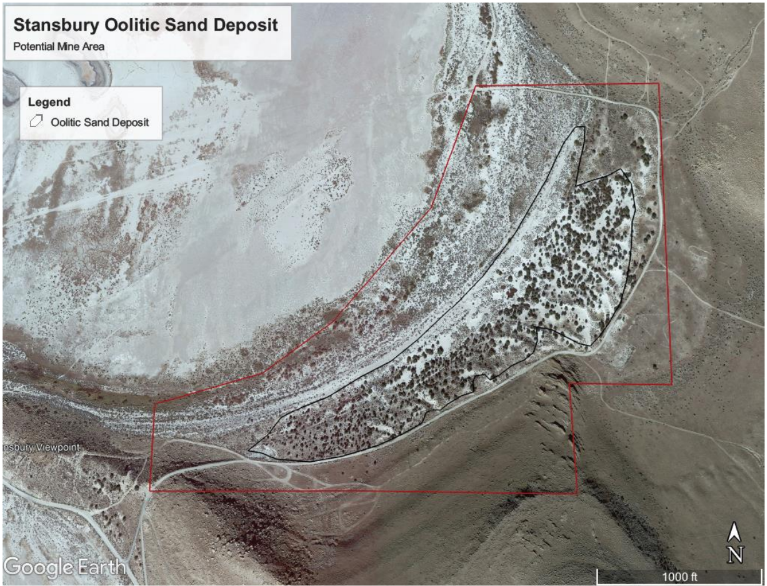CLICK HERE TO READ FULL REPORT
Summary
Introduction
Property Description and Location


Land Status
Accessibility, Topography, and Vegetation

Geological Setting and Mineralization


TABLE 1: COMPARISON OF OOLITIC SAND WITH AZOMITE


Mineral Resource Estimates
• The potential mine area was identified by using the image of the north end of Stansbury Island and outlining the main portion of the oolitic sand deposit as is shown on figure 7. limited on the west by the material site right-of-way, on the south by the highway and fiber optic line right-of- way, and on the east by the ephemeral drainage containing alluvial deposits.
• The average thickness of the deposit was assumed to be 10 feet thick.
• The unit weight of the material was assumed to be a conservative 95 lbs per ft.3

Interpretation and Conclusions
Recommendations
References
Chapusa, Frank W. P., 1969, “Geology and structure of Stansbury Island”, Thesis University of Utah,
College of Mines & Earth Sciences, https://collections.lib.utah.edu/ark:/87278/s6xd1ggg.
Lawrence, Robert, 2018, “The Mysterious Origin of Oolitic Sand”, Hakai Magazine – Coastal Science and
Societies,
https://hakaimagazine.com/news/the-mysterious-origin-of-oolitic-sand/.
Palmer, Dennis E., 1970, “Geology of Stansbury Island, Toole County, Utah”, Brigham Young University
Geology Studies, Volume 17, Part 2 – December 1970.
Wilkerson, Christine M., , “The Rockhounder: Oolitic Sand on Stansbury Island”, Utah Geological Survey,
https://geology.utah.gov/popular/rocks-minerals/rock-mineral-collecting-sites/oolitic-sand/.